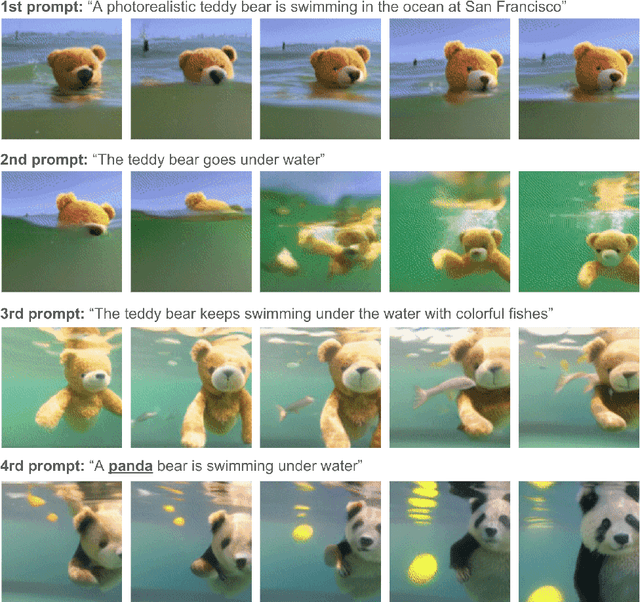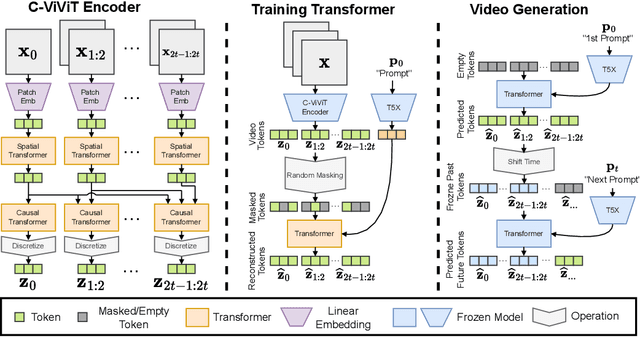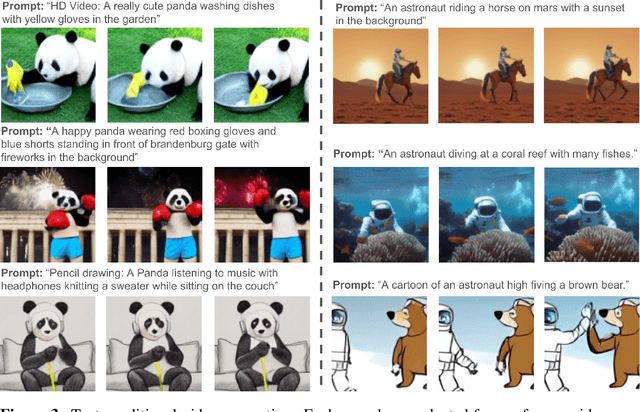Hernan Moraldo
StoryBench: A Multifaceted Benchmark for Continuous Story Visualization
Aug 22, 2023



Abstract:Generating video stories from text prompts is a complex task. In addition to having high visual quality, videos need to realistically adhere to a sequence of text prompts whilst being consistent throughout the frames. Creating a benchmark for video generation requires data annotated over time, which contrasts with the single caption used often in video datasets. To fill this gap, we collect comprehensive human annotations on three existing datasets, and introduce StoryBench: a new, challenging multi-task benchmark to reliably evaluate forthcoming text-to-video models. Our benchmark includes three video generation tasks of increasing difficulty: action execution, where the next action must be generated starting from a conditioning video; story continuation, where a sequence of actions must be executed starting from a conditioning video; and story generation, where a video must be generated from only text prompts. We evaluate small yet strong text-to-video baselines, and show the benefits of training on story-like data algorithmically generated from existing video captions. Finally, we establish guidelines for human evaluation of video stories, and reaffirm the need of better automatic metrics for video generation. StoryBench aims at encouraging future research efforts in this exciting new area.
Phenaki: Variable Length Video Generation From Open Domain Textual Description
Oct 05, 2022



Abstract:We present Phenaki, a model capable of realistic video synthesis, given a sequence of textual prompts. Generating videos from text is particularly challenging due to the computational cost, limited quantities of high quality text-video data and variable length of videos. To address these issues, we introduce a new model for learning video representation which compresses the video to a small representation of discrete tokens. This tokenizer uses causal attention in time, which allows it to work with variable-length videos. To generate video tokens from text we are using a bidirectional masked transformer conditioned on pre-computed text tokens. The generated video tokens are subsequently de-tokenized to create the actual video. To address data issues, we demonstrate how joint training on a large corpus of image-text pairs as well as a smaller number of video-text examples can result in generalization beyond what is available in the video datasets. Compared to the previous video generation methods, Phenaki can generate arbitrary long videos conditioned on a sequence of prompts (i.e. time variable text or a story) in open domain. To the best of our knowledge, this is the first time a paper studies generating videos from time variable prompts. In addition, compared to the per-frame baselines, the proposed video encoder-decoder computes fewer tokens per video but results in better spatio-temporal consistency.
 Add to Chrome
Add to Chrome Add to Firefox
Add to Firefox Add to Edge
Add to Edge